Oshkuy: giant north
• Oshkuy: giant of the north
White Polar Bear, oshkuy or, as it is called - a sea bear - the typical inhabitant of the Arctic. He inhabits the icy expanses of the Arctic Basin and the island up to the northern coast of Siberia and North America. Polar bears live in the Arctic so-called "Ring of Life" - a giant belt, which houses the biggest hole in the ice, and there is a huge amount of marine animals.
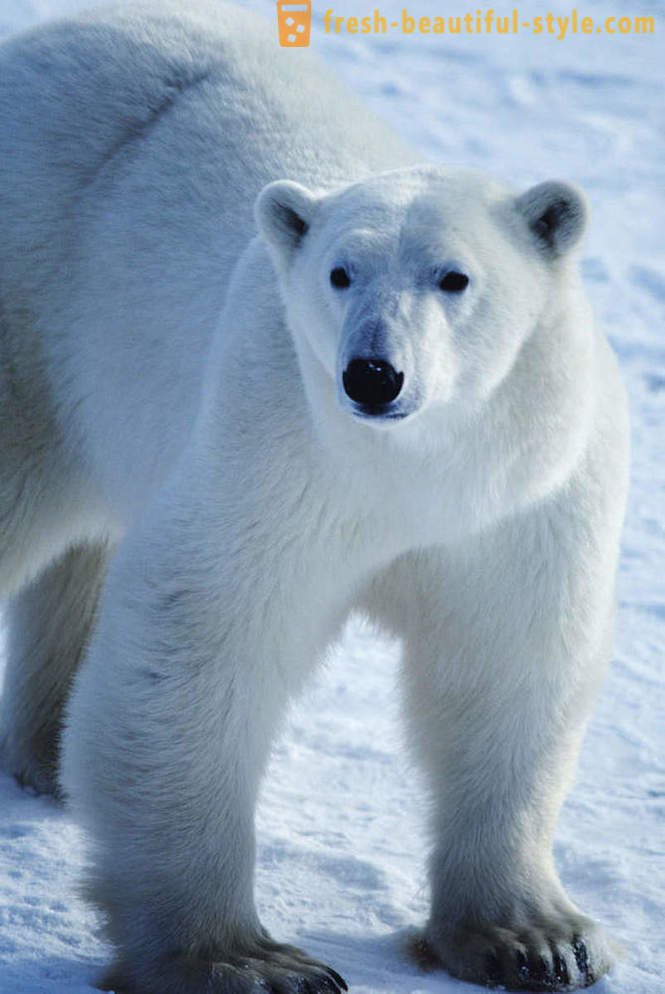
The polar bear is the largest predator on the planet. adult male body length can reach three meters, and weight - up to one ton. Height at the withers - more than one and a half meters. However, the polar bear females are much smaller and usually weigh 200-300 kilograms. The smallest bears are found on Spitsbergen, the largest - in the Bering Sea.
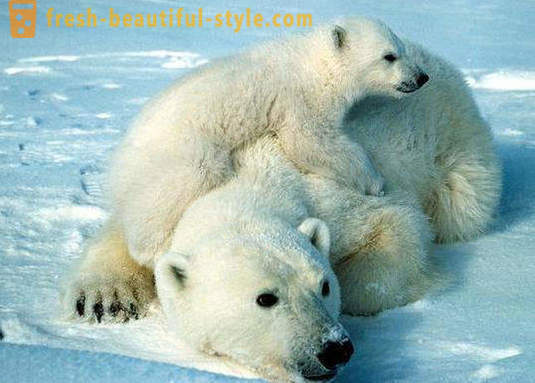
On the other bears oshkuy different long neck and flat head. Interestingly, the skin of a polar bear is black, fur color varies from white to yellowish. Zoologists believe that the yellowness fur appears under constant exposure to sunlight. The wool itself bear no coloring pigment, and the hairs are hollow and have the ability to absorb ultraviolet rays, which protects an animal against overheating in the sun. Sometimes fur of a polar bear gets a greenish color - this is due to the fact that within a hairs infest microscopic algae. Typically, such a "repainting" occurs in hot climates (at a content in the zoological gardens and zoos).
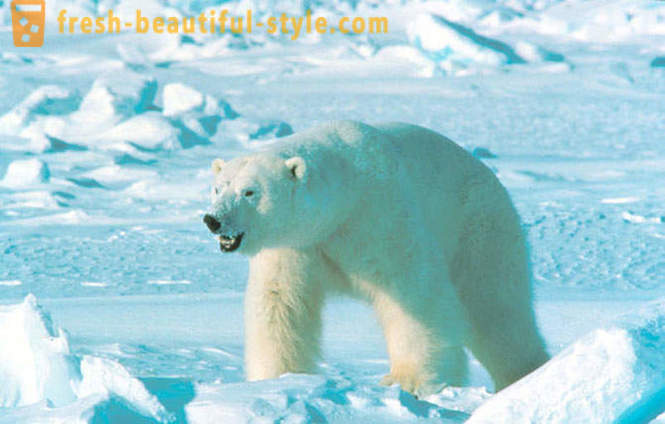
"Shuba" polar bear is very thick and dense, well protected from the cold, and in addition saturated with fat lubrication, which prevents wetting wool in water. animal paws, too soles are covered with hair. All polar bears under the skin is a thick layer of subcutaneous fat, also saving on supercooling.
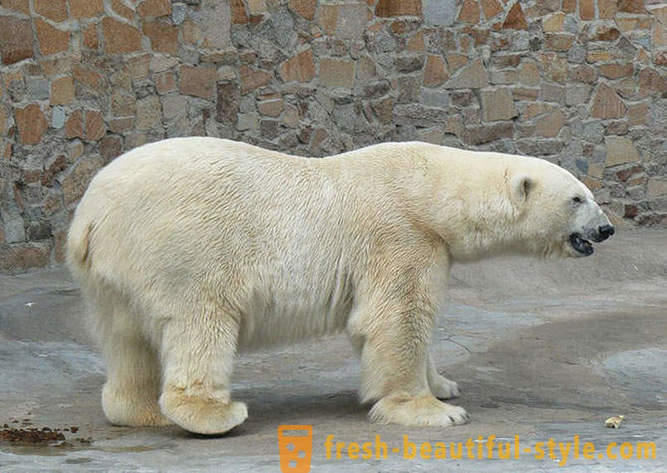
On the front paws of polar bears between the fingers arranged membrane, allowing the beast to swim quite a long distance. There are cases when polar bears looking for food overcame more than fifty kilometers, while constantly being in the icy water. And they can swim with great speed to their weight - about 12 kilometers per hour. But usually these predators prefer a different way of moving - on breakaway ice floes of the fast ice.
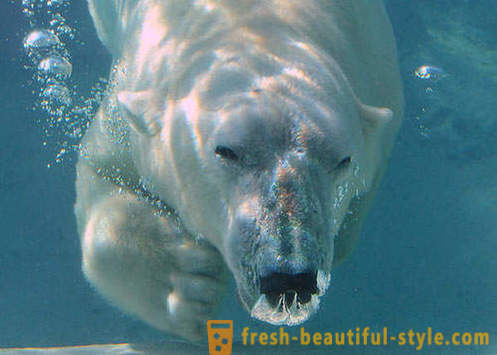
For days standing idle on his ice floe, the animal periodically rises on his hind legs and carefully inspects the offing drifting pieces of ice in search of seals, walruses, seals and other marine animals. Finding extraction bear silently slides into water and carefully swim to the victim, so that only on the surface of the eye and nose are visible. If the ice field a lot and for dinner you need to make an overland trip, the bear will be on the belly will slowly creep up to the potential victim on the leeward side, closing one claw your eyes and nose - the only black spots, which are clearly visible on a white background and are able to give this the predator.
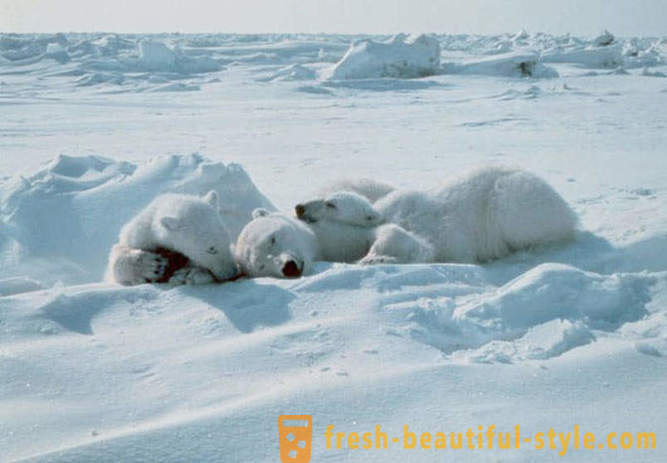
His prey Polar Bear finished off with a single blow powerful paws, armed with huge, non-retractable claws. For adult once the animal is able to eat up to 20 kilograms of meat.
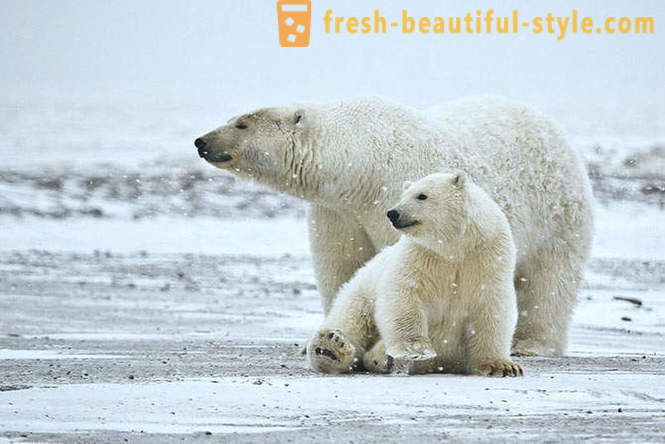
If the production is small, the bear will not disdain carrion, eggs or chicks, and in places inhabited by man can dig in the rubbish pits. In accordance with the annual variation of the polar bear makes annual migrations: summer retreats to the North Pole, and in the winter moved south, going even to the mainland, but still prefers to stay on the ice or on the coast. But the polar bear den, intended for hibernation, can be found both on the polar islands, and inland - half a hundred kilometers from the coast. However, in a long hibernation, the duration of which is fifty to eighty days, lie only pregnant females. Males and single females lay down to sleep for a short time, and even then not every year.
Polar bears are very low reproduction capacity: for the first time brings the female offspring at the age of four to eight years. Bear gives birth to no more than once in two or three years and has a litter of one to three cubs. Throughout the life of the female can bring no more than fifteen young. Moreover, neonatal mortality reaches 30%.













































